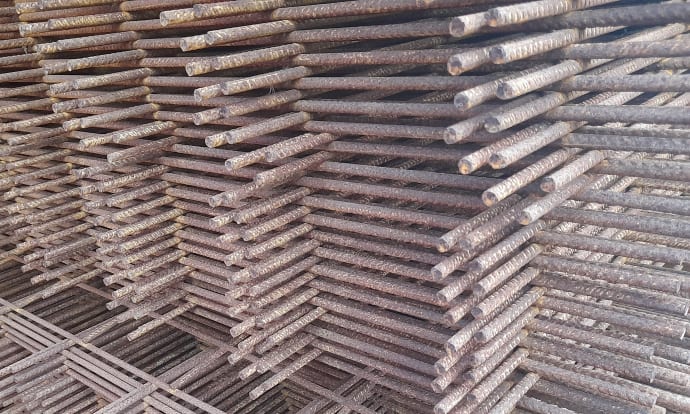What is Industrial Reinforcement Mesh?

Whether it’s a building, a bridge or a road, it can provide durability and longevity. In this blog post, we’ll take a closer look at reinforcement mesh, what it is, the different types and where it can be used.
What is Reinforcement Mesh?
Industrial reinforcement mesh, also known as wire mesh, is a pre-assembled sheet made of high-strength steel wires arranged in a grid-like pattern. The main purpose of industrial reinforcement mesh is to reinforce concrete, providing ductile strength and protecting against any potential cracks or structural issues.
Commonly used in both residential and commercial construction projects, alongside infrastructure development, reinforcement mesh adds great strength.
What are the Different Types of Industrial Reinforcement Mesh?
Reinforcement mesh comes in a range of different styles and types, making it easier to find something to suit your requirements.
Self Colour
All our self-colour panels are 4800mm high and 2200mm wide, and are available in several different mesh types, including: A193, A252, A393, B1131, B785, B503
Galvanised
Our galvanised panels are available in 1220mm x 2440mm with either industrial mesh gauge 12 with 1” x 1” holes or gauge 10 with 2” x 2” holes
Copper Finish
Our copper finish industrial mesh panels are available in 1220mm x 2440mm. Panels available with gauge 12 and 1” x 1” holes, gauge 12 with 2” x 2” holes and gauge 10 with 2” x 2” holes.
Where Can You Use Industrial Reinforcement Mesh?
Reinforcement mesh can be used in a range of applications to help add strength and stability to the structure.
Concrete Structures
Extensively used in concrete structures such as foundations, concrete slabs, walls, and beams, industrial reinforcement mesh can help to increase structural integrity in locations such as buildings and warehouses.
Roads and Pavements
In road construction, industrial mesh can be integrated into pavements to minimise cracking and help increase durability, particularly in areas where heavy traffic passes and where the temperature can change.
Retaining Walls
Reinforcement mesh can ensure stability and prevent soil erosion for retaining walls, especially where landscapes are sloped or there is high water pressure.
Precast Elements
In precast concrete manufacturing, steel reinforcement mesh can be embedded in elements such as panels, pipes and barriers to help improve their strength and performance.
Industrial Applications
From warehouses and factories to power plants, industrial reinforcement mesh can be used for flooring, walls and other structural components.
What is the Manufacturing Process for Industrial Reinforcement Mesh?
There are a few different steps when manufacturing reinforcement mesh, typically it involves;
- Wire Production: High-quality steel wires are produced through several processes, and then can be coated to add strength and durability to the mesh.
- Mesh Formation: The steel wires are fed into a mesh welding machine, where they are welded together at intersections to form the desired pattern.
- Surface Treatment: depending on the application and the environmental conditions, the reinforcement mesh may be galvanised to enhance corrosion resistance to add longevity to the product.
Conclusion
Reinforcement mesh is the backbone of modern construction, providing support to concrete structures. While concrete excels in compression, it is inherently weak when subjected to tension forces. Reinforcement mesh can help relieve this weakness by distributing force across the grid. Without this reinforcement, concrete structures would be prone to failure, compromising safety and longevity.
Industrial reinforcement mesh is an extremely versatile product that is ideal for enhancing the strength and durability of a range of construction projects.
With a range of different types and applications, it is a key element in engineering, construction and infrastructure development.


